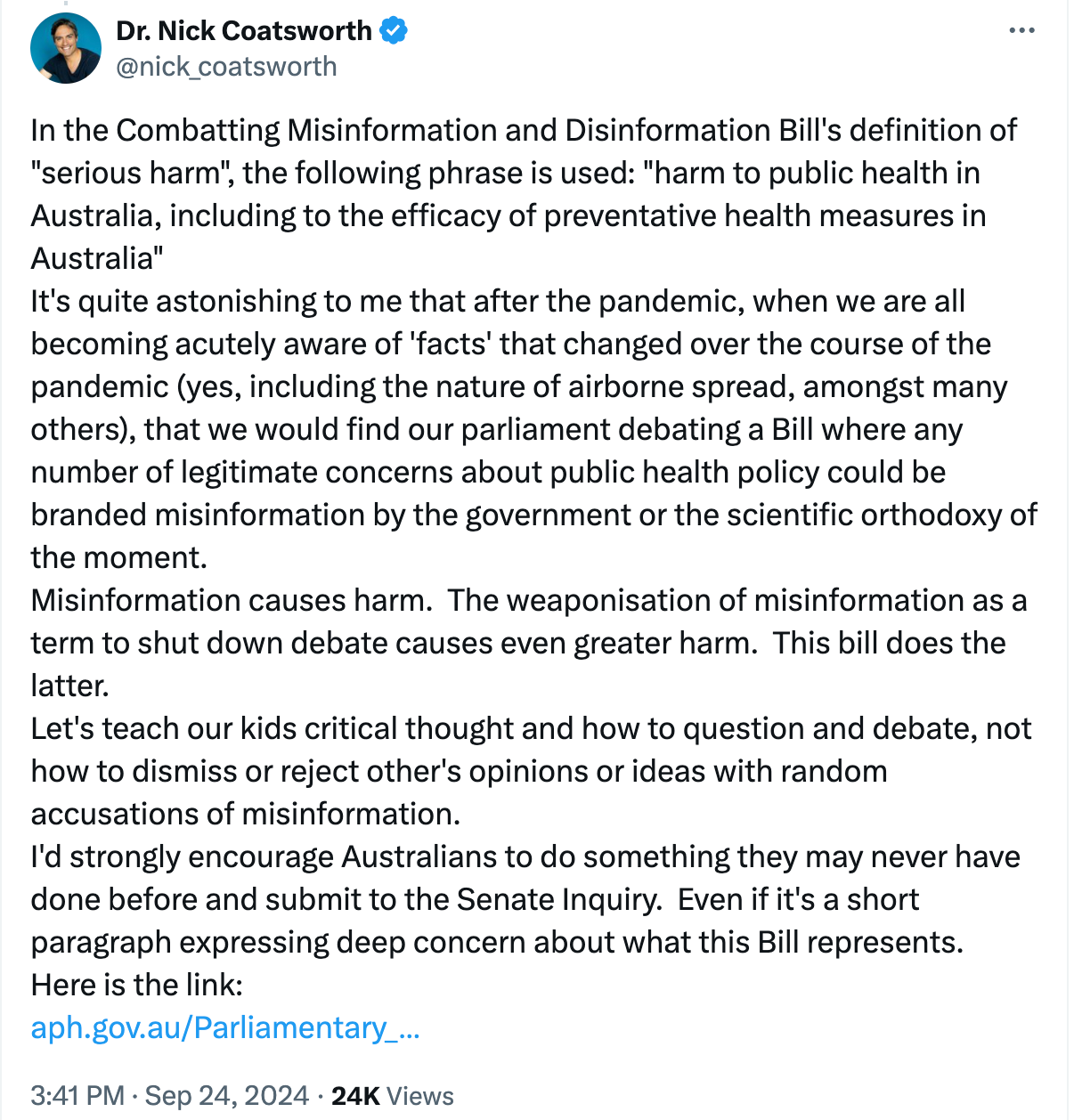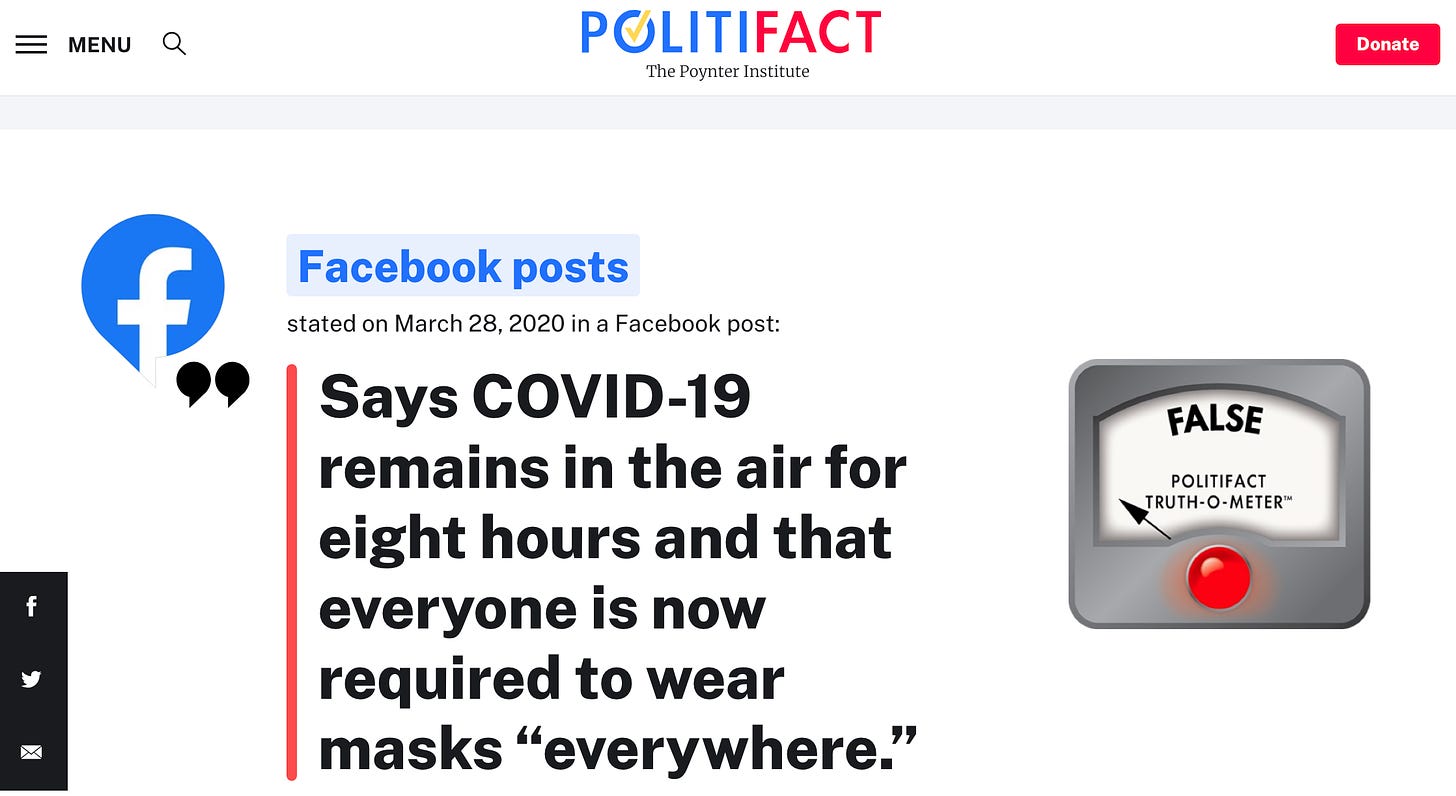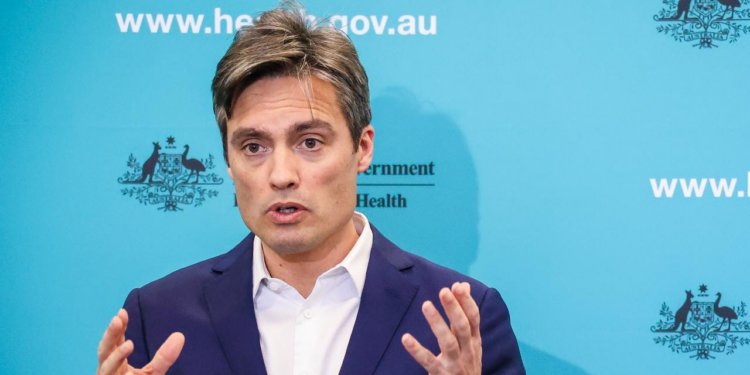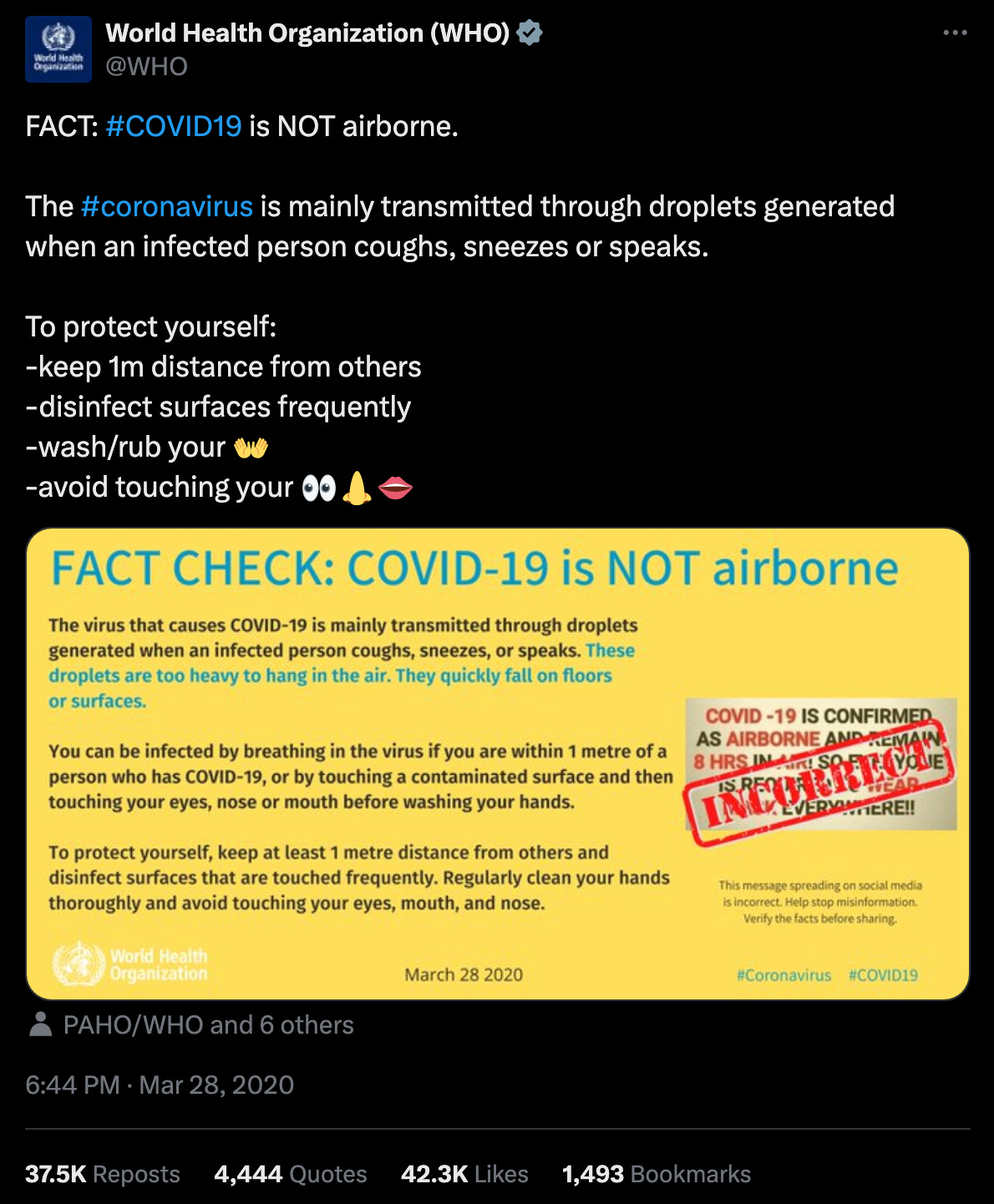A popular TV doctor and senior health official in Australia’s Covid response has cautioned against the “weaponisation” of misinformation, calling for the Australian Government’s revamped misinformation bill to be “rejected in its entirety”.
Dr. Nick Coatsworth, who served as Deputy Chief Medical Officer and Senior Medical Advisor on Covid during 2020 and 2021, warns that the centre-Left Australian Government’s bill to mitigate harms arising from misinformation and disinformation will lead to the suppression of legitimate debate, causing even greater harms.
Under the proposed laws, digital platforms will be required to demonstrate that they are identifying and preventing the spread of misinformation and disinformation to satisfaction of the Australian Communications and Media Authority (ACMA), or else risk fines of up to 5% of global revenue.
In a statement on X, Dr. Coatsworth said that “the branding of legitimate debate on Covid as misinformation both during the pandemic and ongoing” had spurred him to voice his concerns about the bill, which the Government hopes to pass into legislation by the end of the year.
As the face of Australia’s Covid advertising campaign during the early stages of the pandemic, Dr. Coatsworth pushed the vaccines and mandates on television. The infectious diseases and respiratory medicine specialist later had a change of heart, admitting that “we did get [the mandates] wrong” and admitting that he hadn’t personally had more than three shots because the science didn’t support it.
Dr. Coatsworth’s full statement, posted to X yesterday:
The branding of legitimate debate on Covid as misinformation both during the pandemic and ongoing has provoked me to write a submission to the Senate Committee overseeing the Combating Misinformation and Disinformation Bill. This bill should be rejected in its entirety.
In the Combating Misinformation and Disinformation Bill‘s definition of “serious harm”, the following phrase is used: “harm to public health in Australia, including to the efficacy of preventative health measures in Australia.”
It’s quite astonishing to me that after the pandemic, when we are all becoming acutely aware of ‘facts’ that changed over the course of the pandemic (yes, including the nature of airborne spread, amongst many others), that we would find our Parliament debating a Bill where any number of legitimate concerns about public health policy could be branded misinformation by the Government or the scientific orthodoxy of the moment.
Misinformation causes harm. The weaponisation of misinformation as a term to shut down debate causes even greater harm. This bill does the latter.
Let’s teach our kids critical thought and how to question and debate, not how to dismiss or reject other’s opinions or ideas with random accusations of misinformation. I’d strongly encourage Australians to do something they may never have done before and submit to the Senate Inquiry. Even if it’s a short paragraph expressing deep concern about what this Bill represents.
At the end, Dr. Coatsworth added a link to the Senate Inquiry page for people to make their own submissions.


Dr. Coatsworth raises two important points not addressed anywhere in the Government’s misinformation bill or supporting documentation.
First, those in charge of adjudicating what is and is not misinformation are sometimes wrong, resulting in the censorship of true information. Second, there are harms associated with the suppression of true information.
Though the bill itself is hazy on exactly how misinformation and disinformation will be identified, accompanying documents indicate that information will be sorted according to three criteria:
- Prioritising “credible and trusted news sources”
- Partnering with “fact-checkers”
- Deferring to advice from official authorities as a proxy for ‘truth’
I pointed out the obvious problems with this information verification system in my article on the resurrected misinformation bill earlier this month:
These are obviously flawed methods for sorting true from false information. “Credible and trusted news sources” routinely publish falsehoods without making follow-up corrections, and fact-checkers frequently make false and biased claims which amount to no more than opinions in a court of law. Platforms using official policy positions as a proxy for ‘truth’ ensure strict adherence to political policies but automatically filter out emerging science and thought.
To take Dr. Coatswoth’s example, the World Health Organisation (WHO) incorrectly tweeted in March 2020, “FACT: #COVID19 is NOT airborne”, and continued to downplay the role of airborne transmission throughout the first year of the pandemic, long after the evidence showed that the virus is indeed airborne.
Dr. Coatsworth himself participated in spreading this false information, telling media in July 2020 that despite emerging evidence of Covid’s airborne spread, the “overwhelming weight of evidence” still pointed to contact and droplets being the main ways the virus spread.
This was backed up by fact-checkers, who ‘debunked’ social media posts claiming that Covid was airborne largely on the basis that authorities, including the WHO and the Centres for Disease Control (CDC) advised that Covid was primarily spread by droplets.



Other falsehoods promulgated by health authorities, experts and fact-checkers include (but are not limited to): flip-flopping on masking efficacy; promising that the vaccines would meaningfully control the spread of the virus; exaggerating the risks of Covid; branding the likely lab origin of the virus a ‘conspiracy theory’; and denial of now scientifically proven vaccine side-effects, such as menstrual irregularities.
Given that authorities, experts and fact-checkers are fallible, it is guaranteed that true information will be suppressed under the proposed laws.
What is the cost of suppressing true information?
In the case of the above-mentioned falsehoods, potentially millions of lives and billions of dollars.
Consider:
- How many vulnerable people contracted Covid in the first year of the pandemic because true information about how the virus transmits was censored?
- How many vaccinated immunocompromised individuals mingled with vaccinated friends and family believing they were immune to the virus, only to contract it because their ‘protection’ didn’t work as advertised?
- How many billions of dollars and well-being years (WELLBYs) were lost as a direct result of unnecessarily aggressive and prolonged lockdowns, while information exposing the authorities’ systematic exaggeration of Covid risks (and overreaction to it) was suppressed?
- How many millions of people will die in future lab-derived pandemics because of the failure to admit and address the almost certain lab-origin of this pandemic?
- How many people with easily identifiable health risks could have been saved from injury or death if information on vaccine side effects had not been censored?
There are less costly ways of dealing with misinformation.
Dr. Coatsworth suggests we “teach our kids critical thought and how to question and debate, not how to dismiss or reject other’s opinions or ideas with random accusations of misinformation”.
I would add that teaching media literacy can help people to discern the trustworthiness of online content and media news. But, I mean media literacy based on an understanding of how the media environment and tech works, combined with critical thinking skills, as opposed to dumbed-down exercises teaching people to click through to official websites for their single source of truth.
There is considerable public appetite for media literacy education, by the way.
Communications Minister Michelle Rowland has recently quoted the Adult Media Literacy report (2024) finding that 80% of Australians want authorities to take action on misinformation in support of her department’s bill.
However, the report, by the Australian Media Literacy Alliance, also found that an even higher proportion of Australians want media literacy education in schools (84%) and for adults (82%). Of those who said they wanted action on misinformation, almost all (94%) said they wanted people to be taught how to identify misinformation.
A final point I would add is that social media features that facilitate constructive conversation can advance the truth-seeking function of public discourse.
Two tools on X are noteworthy in this regard. One is Community Notes, a crowd-sourced feature allowing users to add ‘notes’ to posts that offer clarification, context or refutation. It’s open to being gamed, but in my experience, it is much more effective in assisting users to assess posted content than top-down ‘fact-checker’ labels or censorship.
The second is a pop-up asking the user if they would like to read an article in full before re-sharing it. This puts in a ‘pause,’ encouraging the user to fully engage with the content before further disseminating it.
The Australian Government’s misinformation bill does include provisions for digital platforms to provide media literacy resources to their users, but it does not consider or recommend that digital platforms can address misinformation by refining functions that improve the discursive process.
The misinformation bill supposes that: a select group of appointed experts can reliably detect misinformation and disinformation; that this will prevent harms; and that this will provide net benefit to the Australian people.
These premises are hopelessly misguided, and for this reason I will be joining Dr. Coatsworth in submitting my recommendation that the Combating Misinformation and Disinformation Bill 2024 be rejected in its entirety.
Submissions to the Senate Inquiry into the bill are open until September 30th 2024.
Backgrounder on the misinformation bill here.
This article was originally published on Dystopian Down Under, Rebekah Barnett’s Substack newsletter. You can subscribe here.













To join in with the discussion please make a donation to The Daily Sceptic.
Profanity and abuse will be removed and may lead to a permanent ban.
It is quite funny when you consider the implications of their attitude. That we are all such cretins and empty vessels to be filled up at ill by the first chancer that comes along. I suppose to be fair that is the case a lot of the time but it is hardly the business of these degenreates to interfere. They are falling apart at the seams their moves will become more and more desperate, ultimately absurd and at that point they’re defeated and it isn’t far away.
The UK’s Online Safety Bill was going to outlaw vaccine misinformation but that was dropped.
Guess who is the biggest spreader of vaccine misinformation?
Maybe Westminster decided to avoid the problem which beset Humza Yousaf.
More than 3,000 hate crime complaints made to Police Scotland against him under the new crime of “stirring up hatred” introduced by his government.
Never forgive.
Never forget.
Perhaps the German Government will now scrap Energiewende? Or will they kneel to the UN/WEF?
“…admitting that he hadn’t personally had more than three shots because [the $cience] didn’t support it.”
Three?!! This Sheeple~Shill Statement says it all to us Wolf readers. Like Malhotra. One should be Sceptical and never trust such duplicitous persons who change tack so extremely within such a short period of time.
Mrs Q and I knew, from March 2020, that it was all a [Plan] – “Three weeks to flatten the world’s populations.” And when the experimental EUA coof jab arrived and was foisted upon us so forcibly, we knew that it was poisonous. It’s [Trial] was not planned to complete until 2025-2027.
Remember the 4-Ships Data from Jan to April 2020?
OT on the subject of Trust: Watched a recording of Peter Hitchins on GB News sent to me this evening, and his partial support of ‘State Access to Bank Accounts’. Hitchins, of all people. Bastani was more against, and warned of “giving an inch to one State Department, then….”
Mind you, it is all Theatre presented to us, is it not? We must have moved to the next Act.
It will be far worse next time (very soon). They have honed their scare tactics based upon the scariest things about ‘Covid’ – largely breathing difficulties and then placement on a ventilator. It is worth looking at the survival statistics for erstwhile healthy people put on ventilators – perfectly healthy people. It was around an 85 percent kill rate of healthy people.You have to be careful and vigilant they will destroy you otherwise.
Oh no, it looks like Rebekah is another member of the so-called ”freedom movement” who buys into the garbage that there was a pandemic and there will ( possibly ) be another one in the future, thereby strengthening the case for the globalist psychopaths, should they wish to give it another shot at some point in time. Well it’s a case of ”computer says no”, because all the data from experts in their fields demonstrates that no, there was not a pandemic, and I wholeheartedly agree. Whether SARS-CoV-2/’Covid-19′ was even a thing, I have no idea, but I couldn’t care if some ‘thing’ resulted from a pangolin and a bat having a playdate or some manmade virus did get set free from a lab, I’d argue: does it even matter? We know that no real virus is ever going to be super lethal *and* have the ability to sweep the globe, killing all and sundry as it wreaks havoc. This is the stuff of sci-fi movies and not how viruses work in the real world. I do, therefore, agree with Jessica Hockett et al here, and there’s many other familiar names have scrutinized the data and come to the same conclusion;
”This post is going to cost me.
I will (once again) lose friends, followers, and associates because of what I’m going to say about Jay Bhattacharya – a person whose advocacy in 2020 I respect and appreciate. It happens every time I challenge his views in public or private – or express an opinion about the need for others who disagree with him to openly challenge his views – and I don’t expect this time will be any different.
I believe Jay Bhattacharya’s position on the COVID pandemic is incorrect & misguided, and that substantive and necessary scientific debate among those who dissent from the government’s COVID narrative is being avoided because people are afraid or loathe to publicly challenge him and other high-profile individuals who are anti-mandate/anti-lockdown allies but pro-pandemic.
Recent tweets are illustrative.
Today Dr. Bhattacharya said, “In the next pandemic caused by a pathogen with the epidemiological characteristics of SARS-CoV-2, governments everywhere will impose a lockdown policy until mandatory vaccination. Until repudiated by the public, it is the new normal.”
Consistent with the view he has espoused for four years, Jay Bhattacharya is asserting
a) there was pandemic in 2020,
b) a pathogen called SARS-CoV-2 caused that pandemic,
c) there will be another pandemic,
d) this future pandemic will be/can be caused by a pathogen with characteristics similar to SARS-CoV-2.
Martin Neil’s reply and Jonathan Engler’s response are consistent with my view that a pandemic did not occur.”
https://sanityunleashed.substack.com/cp/149247136
Johnathan Engler has subsequently asked for his name to be removed from The Great Barrington Declaration. I thought his reasoning in this email was excellent. By perpetuating the myth that there was a pandemic people are empowering and lending credibility to the very shysters who were behind the entire charade, thereby they’re unwittingly increasing the likelihood of them attempting a repeat performance. They’re also letting the criminals who are responsible for committing democide, iatrogenesis and the ‘casedemic’ resulting from the fraudulent PCR tests off the hook, because as long as people believe there was a pandemic said criminals will always have a justification for their psychopathic actions. Nobody has been held to account and punished yet and that’s how it will stay.
An excerpt;
”Hello,
Please could you remove my name from the signatories to The Great Barrington Declaration.
When I signed this document, I believed the story that there was a novel virus around which was causing a novel illness, and that some sort of protection for some people was deemed desirable.
However, I am now firmly of the belief that the pandemic construct was staged. Any and all harms observed and reported can be explained by a combination of: mistreatment, maltreatment, non-treatment, neglect, abuse and data fraud.
The key tools used to stage the event were propaganda, data fraud (of several varieties) and the mass rollout of a fraudulent test.
Without these:
The “pandemic” – such as it was – was created by the response to the misguided and false perception of a novel virus in circulation.”
https://sanityunleashed.substack.com/p/why-i-have-asked-for-my-name-to-be
Another great article from Rebekah. The very fact that Nick Coatsworth an infectious diseases expert got it wrong at the beginning is a terrific argument against the proposed censorship in this bill. His error demonstrates that even knowledgeable people can be taken in and swept up in the panic and makes it all the more important that dissenting voices are not censored as they are so important to bring us back to sanity.
It’s vital for the proper functioning of democracy that malicious dissemination of misinformation is strictly prohibted. Therefore, effective immediately, all election campaigning is declared illegal. Publishing party manifestos may be sanctioned with up to 5 years in jail and any attempt of a govenment to hold a press conference will lead to immediate, disgraceful dismissal of all government members who planned to partake in it. Lastly, as malicious disseminiation of misinformation by people posing as scientific experts has been proven to be particularly harmful, a government science advisor planning to make any statement in public is to be decapitated on the spot the moment he looks as if he’s planning to open his mouth.
…
“Misinformation” is a COVID era term and really means nothing except “anything which might impact the sales of face masks or COVID shots or question the motives of teetotallers taking it out on the hospitality industry”. Freedom of speech is always the freedom to publish something despite someone else is strongly convinced that it’s both factually and morally wrong and practically harmful, ie, the freedom to express an opinion on public affairs, where such someones are always guaranteed to exist.
Present-day “democratic politicians” don’t much like that because they love to envision themselves as preachers on a pulpit, here to teach the lay people the proper interpretation of the words of God, who are not-so-politely asked to keep their mouths firmly shut while the sermon is still ongoing and not debate its contents in less-than-charitable terms afterwards lest they all go to hell.
Politicians have not acquired their offices by grace of God and thus, are in no way better than anybody one might meet in the streets. They have no business trying to influence our minds with other means than persuasion.